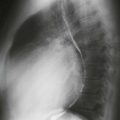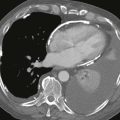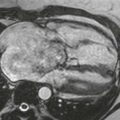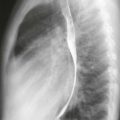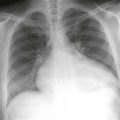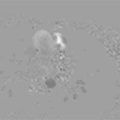CASE 79
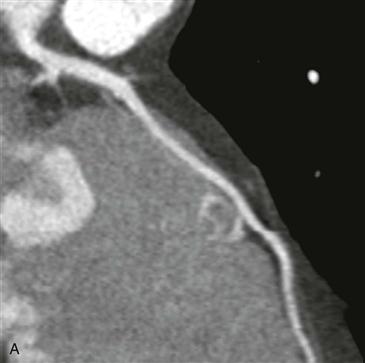
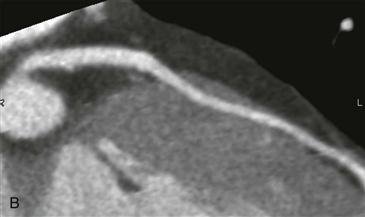
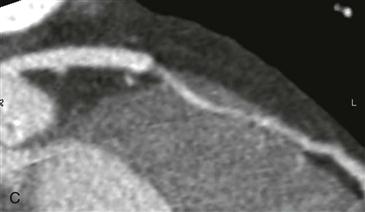
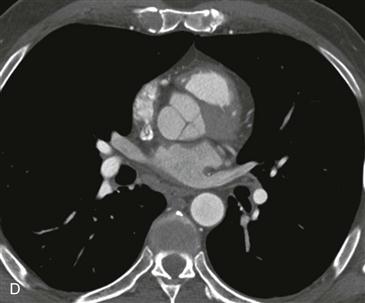
History: A 48-year-old man with intermittent chest pain and an inability to perform a stress echocardiogram was referred for CT angiography of the coronary arteries. Fig. B was obtained during diastole, and Fig. C was obtained during early systole.
1. What are considered risk factors for developing coronary artery disease? (Choose all that apply.)
B. Hypertension
D. Dyslipidemia
2. What is the finding in Fig. B obtained in diastole and in Fig. C obtained in systole?
D. Dissection
4. What is the most common treatment for this lesion?
A. Beta blocker
C. Surgical resection of bridged segment
D. No treatment
ANSWERS
Reference
Möhlenkamp S, Hort W, Ge J, et al. Update on myocardial bridging. Circulation. 2002;106(20):2616–2622.
Cross-Reference
Cardiac Imaging: The REQUISITES, ed 3, pp 223–224.
Comment
Imaging
Multiple images from CT angiography of the coronary arteries show a myocardial bridge affecting the mid left anterior descending coronary artery (Figs. A–D). An image obtained during diastole shows no narrowing (Fig. B). An image obtained during systole shows circumferential narrowing (Fig. C). On further questioning, this patient had intermittent chest pain not induced by exercise, and the myocardial bridge was deemed an incidental finding.
Description
The coronary arteries normally course along the surface of the heart through epicardial fat. Approximately 25% of patients have an intramyocardial course, termed myocardial bridging, where a short segment of coronary artery is completely surrounded by myocardium. During systole, there is compression of the bridged coronary artery (Fig. C). Because most blood flow (approximately two thirds) occurs during diastole (Fig. B), this compression rarely results in symptoms. Myocardial bridging most commonly affects the midsegment of the left anterior descending coronary artery as in this case.
Treatment
Myocardial bridging is usually an incidental finding of minimal or no clinical significance. Uncommonly, bridging may cause angina, left ventricular dysfunction, or myocardial infarction. Clinical symptoms are more likely if the bridged segment is long or the dynamic stenosis also occurs in early diastole. The available treatment options for symptomatic patients are beta blockers, percutaneous stenting, and surgical resection of the muscle bridge.

